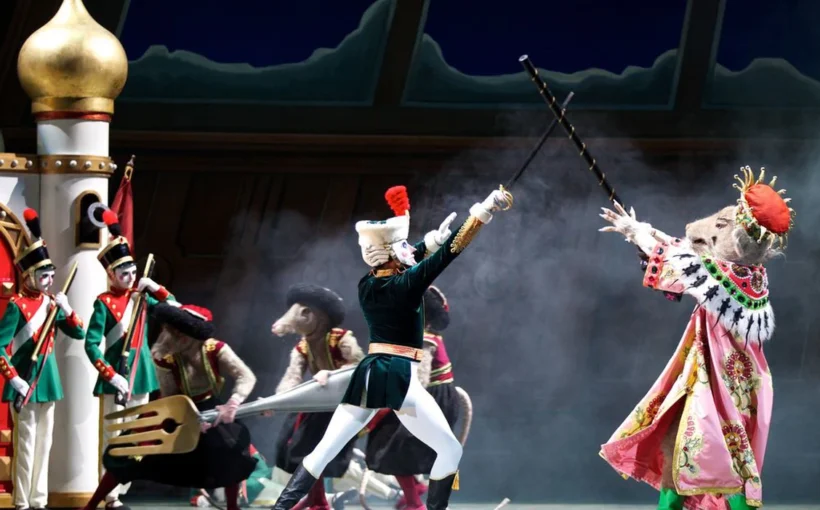
According to Alberta Ballet dancer Kelley McKinlay, it’s not wise to switch to autopilot when you’re performing in The Nutcracker.
That happened with McKinlay at one performance, where a fatigued fellow dancer misread the casting sheet. The mishap occurred during the party scene where the Stahlbaum family are hosting their annual Christmas gathering, the one where young Clara meets the handsome Nutcracker of the title. McKinlay, in the role of family friend and magician Drosselmeyer, calls on the four dolls he’s brought for the children as gifts to dance. Unfortunately, one of the dolls was nowhere to be seen.
A lifetime in The Nutcracker
It’s helpful that many Nutcracker performers are playing a number of different roles in any given production, thus allowing for a certain amount of improvisation when necessary. McKinlay himself has been part of Alberta Ballet’s production since 1987, taking on the part of “baby mouse” at the age of four. Since then he’s played every male role in the production multiple times over, like other dancers often switching four or five times during a performance. This time around you can see him again as Drosselmeyer, as well as Herr Stahlbaum, a dancer in the Chocolate, and the Sugar Plum Cavalier.

Despite the fact McKinlay and his castmates have danced the Nutcracker inside out, he cautions that it would be a mistake to grow complacent.
“For a few reasons,” he says. “First, it’s a live orchestra. That’s going to keep it fresh because the tempo is going to be different every night. Sometimes the orchestra makes mistakes, just like we make mistakes, and you have to roll with it. Every year you dance with different people, and even if you danced with someone a few years before they’re a little older and more experienced, and so are you. That changes things.”
Edmund Stripe is in full agreement. Like McKinlay, the Alberta Ballet choreographer has been navigating various Nutcracker roles all of his life, starting in 1973 when he appeared as a toy soldier in Rudolf Nureyev’s production for the Royal Ballet in London. Flash forward to 2002 and Stripe was charged with the Alberta Ballet production; he’s been leading his own version of The Nutcracker since 2008.
“Every season we get a fresh batch of students to work with, whether in Edmonton or Calgary, and while we know the choreography and everything, it does need to be taught, rehearsed and then eventually integrated with the professional dancers. Sometimes that doesn’t happen until maybe a day before the performance, so there are always some quirks. This year especially because of COVID and certain protocols.”
The Nutcracker was scored by Tchaikovsky in 1892, the libretto adapted from E.T.A. Hoffman’s 1816 story The Nutcracker and the Mouse King. The composer died a year later during the cholera pandemic that hit many parts of the world in that decade, especially Russia. We won’t draw any loose parallels here, as enticing as it would be to do so, but we will say that there’s a certain amount of relief when traditional productions like The Nutcracker are up and running, and artists can once again do what they’ve been trained to do.
By the numbers
Alberta Ballet wardrobe needs to dedicate 500 hours each year for repair and prep of costumes.
The 12 Snowflake costumes have 6,000 Swarovski crystal rhinestones. Around 500 fall off during each year’s production, and need to be replaced by hand.
The Rat Tsar’s cape weighs almost seven kilograms, while the Snow Tsarina costume is half the weight.
There are six stage carpenters, five electricians, four props people and four on the flycrew working above the stage.
There are more than 100 performers involved including the musicians.
Source: EdmontonJournal



